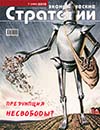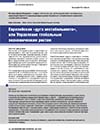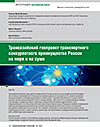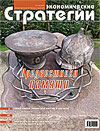The Eurasian Economic Union: Origins of Integration Coopera
DOI: 10.33917/es-1.199.2025.24-33
This article is devoted to the anniversary of the Eurasian Economic Union, which began to function on January 1, 2015. In the article, the authors analyze the difficult historical path of the evolution of Eurasian integration cooperation in the post-Soviet space, the formation of integration ideas and their implementation. The motivations, practice and complex circumstances of the ongoing processes of Eurasian integration are considered.
References:
1. Demografiya v tsifrakh. Statistika Evraziyskoy ekonomicheskoy komissii: Evraziyskaya ekonomicheskaya komissiya [Demography in Figures. Statistics of the Eurasian Economic Commission: Eurasian Economic Commission]. Moscow, 2023, 70 p.
2. Dogovor o Evraziyskom ekonomicheskom soyuze ot 29 maya 2014 g. [Treaty on the Eurasian Economic Union of May 29, 2014]. Ofitsial’nyy sayt Evraziyskoy ekonomicheskoy komissii; Ofitsial’nyy internet-portal pravovoy informatsii, available at: http://www.eurasiancommission.org; http://pravo.gov.ru
3. EAES. Evraziyskaya ekonomicheskaya komissiya. 2020–2023 [EAEU. Eurasian Economic Commission. 2020–2023], available at: https://eec.eaeunion.org/
upload/medialibrary/807/EEC-Book-2020_2023.pdf
4. Oblizina V.V. Integratsionnye protsessy v Evraziyskom ekonomicheskom soobshchestve: institutsional’nye osnovy i tekhnologii realizatsii: diss. … kand.
polit. nauk [Integration Processes in the Eurasian Economic Community: Institutional Foundations and Implementation Technologies: diss…. Candidate of Political Sciences]. N. Novgorod, 2007, 161 p.
5. Soglashenie o sozdanii Sodruzhestva Nezavisimykh Gosudarstv (vmeste s Protokolom k Soglasheniyu o sozdanii Sodruzhestva Nezavisimykh Gosudarstv, podpisannomu 8 dekabrya 1991 g. v g. Minske Respublikoy Belarus’, Rossiyskoy Federatsiey (RSFSR), Ukrainoy); protokol podpisan v g. Alma-Ate 21 dekabrya 1991 g. [Agreement on the Establishment of the Commonwealth of Independent States (together with the Protocol to the Agreement on the Establishment
of the Commonwealth of Independent States, signed on December 8, 1991 in Minsk by the Republic of Belarus, the Russian Federation (RSFSR), and Ukraine);
the protocol was signed in Alma-Ata on December 21, 1991]. Sodruzhestvo. Informatsionnyy vestnik Sovetov glav gosudarstv i pravitel’stv SNG, 1992, Vyp. 1, pp. 6–8, 11.
6. Reshenie Soveta glav gosudarstv SNG “O prinyatii Ustava SNG” (vmeste s Ustavom Sodruzhestva Nezavisimykh Gosudarstv) (prinyato v g. Minske 22 yanvarya 1993 g.) (s izm. ot 19 sentyabrya 2003 g.) [Decision of the Council of Heads of State of the CIS “On the Adoption of the CIS Charter” (together with the Charterof the Commonwealth of Independent States) (adopted in Minsk on January 22, 1993) (as amended on September 19, 2003)]. Sodruzhestvo. Informatsionnyy
vestnik Sovetov glav gosudarstv i pravitel’stv SNG, 1993, no 1; Byulleten’ mezhdunarodnykh dogovorov, 1994, no 1.
7. Soglashenie o koordinatsionnykh institutakh SNG ot 21 dekabrya 1991 g. [Agreement on the CIS Coordinating Institutions of December 21, 1991]. Vedomosti SND i VS RF, 1991, 19 dekabrya, no 51, st. 1798; Sodruzhestvo. Informatsionnyy vestnik Soveta glav gosudarstv i Soveta glav pravitel’stv SNG, 1992, no 1.







